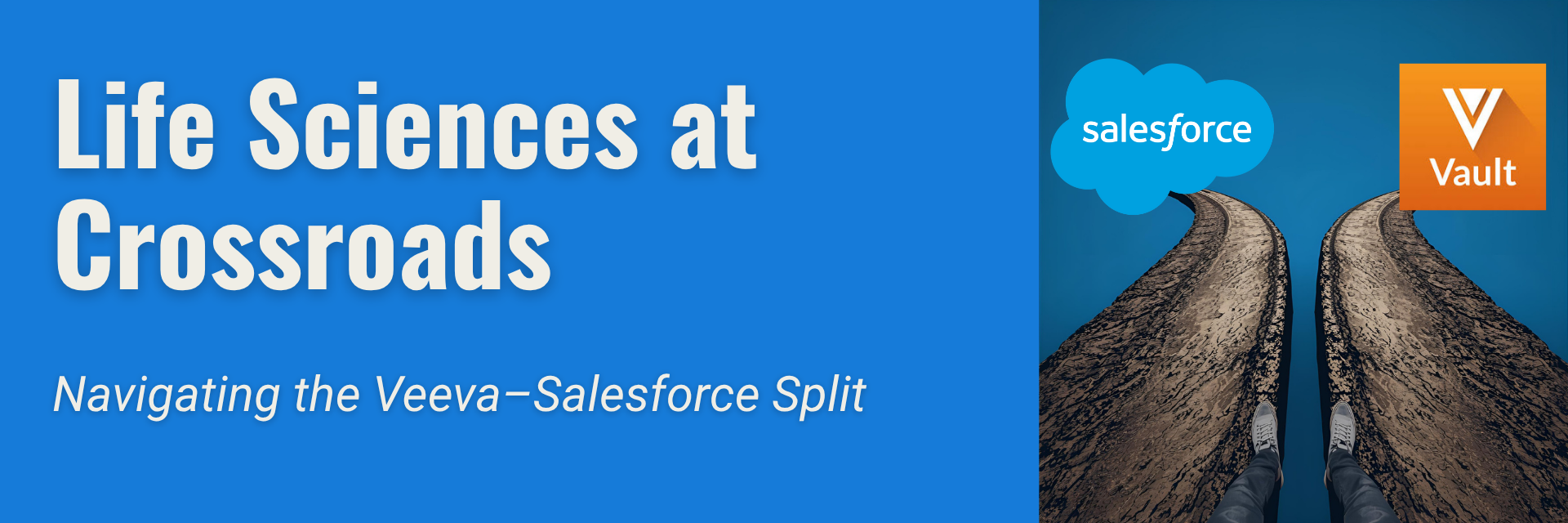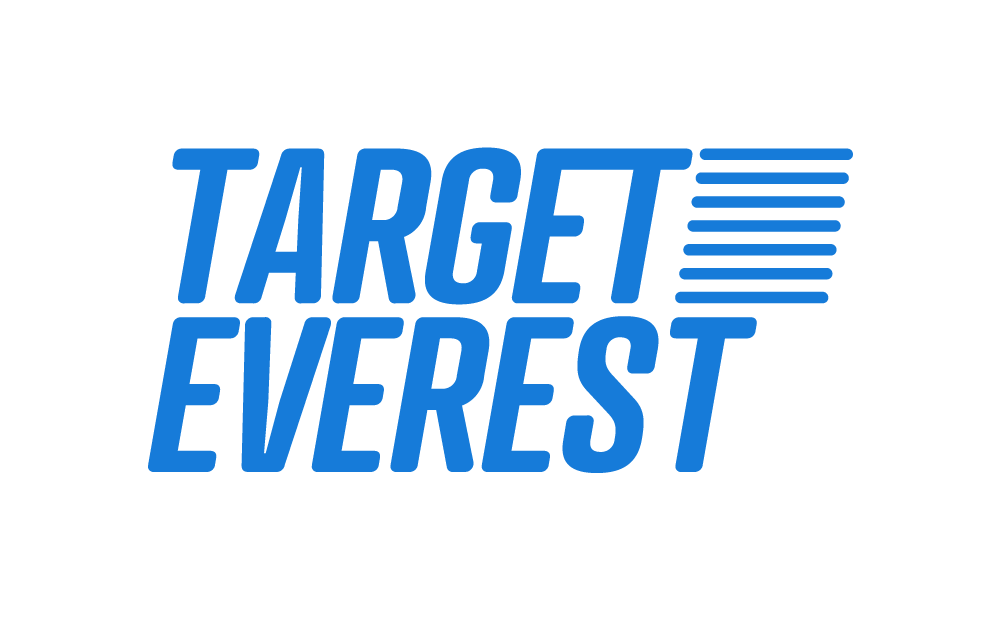Life Sciences at Crossroads: Navigating the Veeva–Salesforce Split

For years, Veeva CRM has been the go-to solution for life sciences companies that wanted an industry-tailored CRM system. Now, with the Salesforce vs Veeva in Life Sciences landscape evolving, organizations are facing an important crossroads for their future strategy.
That landscape is now changing. Earlier announcements confirmed that Veeva will gradually move away from the Salesforce ecosystem and transition its CRM offering to a new platform: Veeva Vault CRM. At the same time, Salesforce is introducing its own Life Sciences Cloud, designed to support pharmaceutical and biotech organizations natively within the Salesforce environment.
This shift marks a turning point for the industry. Companies that have long relied on Veeva CRM will soon need to evaluate how their CRM and content strategies should evolve.
Why this matters now
At first glance, the timeline might seem generous. Current Veeva CRM deployments will remain supported until 2030. However, Veeva has made clear that its strategic innovation focus will shift toward Vault CRM. That means while customers can continue using Veeva CRM on Salesforce, the most advanced developments and new features will primarily appear in the Vault ecosystem.
For life sciences organizations, this is less about a distant deadline and more about starting preparations today. Migrating complex data models, ensuring regulatory compliance, and retraining users are not overnight projects. The companies that begin planning early will be the ones that transition smoothly. In the context of the Salesforce vs Veeva in Life Sciences transformation, those preparations are becoming even more critical.
Navigating the Salesforce vs Veeva in Life Sciences Split
As the split unfolds, Salesforce vs Veeva in Life Sciences is no longer a simple “either–or” decision. In practice, there are three main approaches:
1. Stay with Salesforce – and move to Life Sciences Cloud
Salesforce is extending its industry solutions with the new Life Sciences Cloud, which connects seamlessly to the wider Salesforce ecosystem. For companies already using Salesforce Marketing Cloud, Service Cloud, or Data Cloud, this provides continuity and the ability to harness AI innovations such as Agentforce.
The advantage is clear: staying within Salesforce means staying part of a vast, integrated ecosystem—one that continues to invest heavily in innovation and compliance capabilities.
2. Transition fully to Veeva Vault CRM
Veeva, on the other hand, is moving CRM into its own Vault platform. This brings CRM closer to Veeva’s existing strengths in content, clinical, and regulatory solutions. For organizations deeply invested in the Veeva ecosystem, this might feel like a natural extension.
3. Hybrid approach
Some organizations may also choose a hybrid model: keeping Salesforce as their CRM system, while leveraging Veeva Vault specifically for healthcare or clinical content management. This approach allows companies to benefit from both platforms, though it comes with additional integration and governance considerations.
A decision point for life sciences companies
There is no single right answer for every organization. Each path has its benefits and challenges, and the right decision depends on:
- Existing ecosystem: How deeply is your company tied into Salesforce today?
- Future needs: Will advanced AI, data unification, and omnichannel engagement be central to your strategy?
- Compliance and regulation: Which platform best aligns with your validation and audit requirements?
- Cost and resources: What will migration mean for your teams, budgets, and timelines?
What is certain is that doing nothing is not a strategy. Waiting until 2029 to evaluate options would put enormous pressure on budgets, teams, and compliance timelines. For companies affected by the Salesforce vs Veeva in Life Sciences shift, acting early will define long-term success.
Salesforce Life Sciences Cloud: the future-ready choice
- Integrations: Native connection with Salesforce Marketing Cloud, Service Cloud, and Data Cloud ensures a unified ecosystem.
- AI, Machine Learning & Agentforce: Salesforce is continuously embedding generative AI and machine learning into the Life Sciences Cloud. This not only supports sales and customer engagement but also enables predictive insights, personalized recommendations, and smarter resource planning.
- Scalability: The platform grows with your business, adapting to new products, markets, and customer needs.
- Security & Compliance: Built-in trust and compliance features safeguard sensitive health and patient data.
- Ecosystem advantage: A broad partner network, AppExchange solutions, and a global developer community that no single vendor can match.
How to approach the transition
The most important step companies can take right now is to start the conversation internally. Identify stakeholders across commercial, regulatory, and IT. Map out your current integrations. Assess how critical Salesforce-native AI or Veeva’s content-driven approach will be for the future.
From there, engaging with partners who understand both platforms—and who can provide objective guidance—becomes essential. The decision you make will shape not just technology, but also customer engagement, compliance posture, and long-term agility.
Moving forward
The Veeva–Salesforce split represents more than a technical change; it’s a moment of reflection for life sciences organizations. The question is not just “Which system should we use?” but rather “How do we want to engage with customers, manage data, and stay compliant over the next decade?”
At Target Everest, we see this transition as an opportunity. As a Salesforce partner, we help organizations explore what the Life Sciences Cloud can offer, build migration strategies, and ensure that the shift strengthens—not disrupts—business. Our role is not just to implement software, but to guide companies through change with clarity and confidence.
Final thought
Every transformation comes with challenges, but also with the chance to reimagine how things are done. The life sciences sector is now standing at crossroads. Whether your organization chooses Salesforce, Veeva Vault, or a hybrid path, the key is to start preparing today.
And if you’re wondering how to take the first step, know that you don’t have to navigate it alone.
Disclaimer:
This article reflects the current state of the Salesforce and Veeva roadmaps as of October 2025. Organizations should always verify the latest updates and evaluate their own CRM strategy based on the most recent information available.
Explore more articles on our blog!
Do you want to hear more?
Our team of experts specializes in Salesforce and is dedicated to providing top-notch services to help your business succeed. If you're looking for Salesforce® solutions or have any questions, please feel free to reach out to us. We'd love to hear from you.
Contact us

 Target Everest |
Target Everest |